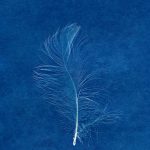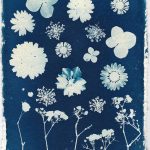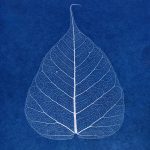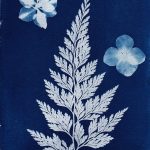Photography Project at Home: Cyanotypes
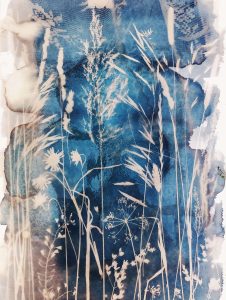
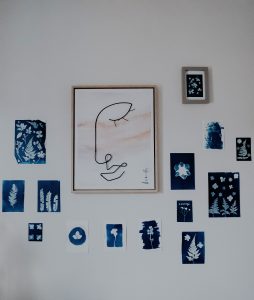
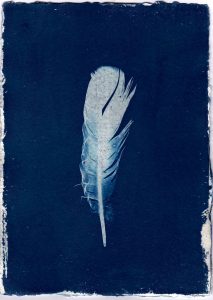
Welcome to our comprehensive guide on creating captivating and mesmerizing cyanotypes right in the comfort of your home. In this article, we will delve into the world of cyanotype photography, uncovering its history, techniques, and the step-by-step process to help you embark on your own creative journey. Whether you’re a seasoned photographer or just starting out, this guide will equip you with the knowledge and inspiration needed to create stunning cyanotype prints that will leave a lasting impression.
Unveiling the Allure of Cyanotypes
Cyanotype, a photographic printing process discovered by Sir John Herschel in the 19th century, is known for its unique blue hue and ethereal appearance. The process involves using two chemicals, ammonium iron(III) citrate and potassium ferricyanide, which react to UV light, resulting in a visually striking cyan-blue image. The beauty of cyanotypes lies not only in their distinct color but also in their simplicity and versatility.
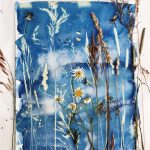
Exploring Creativity and Beyond
Cyanotype offers a canvas for endless creativity. Experiment with various objects, negatives, and even techniques like double exposures to create captivating and unique prints. The process encourages a hands-on approach, allowing you to infuse your personal touch into every piece.
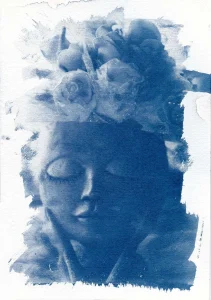
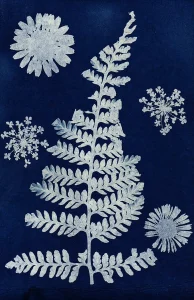
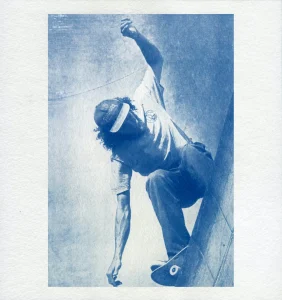
Preserving Your Masterpieces
To ensure your cyanotype prints withstand the test of time, frame them behind UV-protective glass. This not only showcases your work but also safeguards it from fading due to prolonged sun exposure.
Embarking on a photography project at home, specifically cyanotypes, opens up a world of creativity and self-expression. The allure of the cyan-blue tones, the historical significance, and the hands-on process make it an art form worth exploring. Whether you’re an experienced photographer or a beginner, the journey of creating cyanotypes is a rewarding one that unveils the hidden artist within.
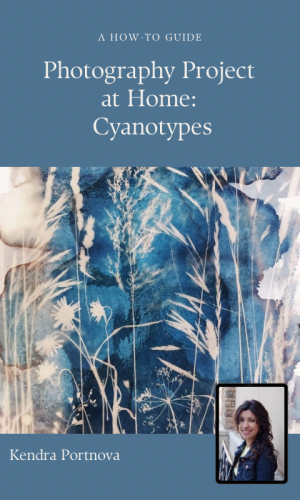
If you’re ready to move from inspiration to creation, the full guide gives you the tools, the know-how, and the confidence to bring your cyanotype ideas to life—beautifully, sustainably, and with artistic flair.
What’s Inside the Full Cyanotype Guide
If you’ve enjoyed this blog post, the full cyanotype guide goes deeper into every step—perfect for creatives who want more confidence, more control, and more artistic payoff. Here’s what you’ll find when you purchase the full guide:
Complete Supply Lists & Material Recommendations — Not just the basics, but premium options, sources, and hacks. I cover all you need: from paper types to coating tools, chemicals, UV light sources, and even preservation materials.
Detailed Step-by-Step Technique — Each stage broken down with illustrations (or photos) and pro tips: coating, arranging compositions, exposure timing, development, fixation, and rinsing.
Creative Variation & Advanced Techniques — How to experiment with layering, toning, double exposures, unusual surfaces, textures and mixed media to make truly unique prints.
Troubleshooting & Fixes — Why some prints come out too pale, why edges blur or uneven coating happens, how to adjust when light conditions change, and long-term preservation strategies.
Printable Quick Reference Guide — A one-page pull-out chart you can keep near your workspace: exposure times, do’s & don’ts, and quick fixes.
Inspiration & Ideas Gallery — Several full-size examples of cyanotype art for inspiration, along with creative prompts and commentary to help spark your own projects.
With this eBook in hand, you’ll have everything you need to start your cyanotype journey with confidence and creativity.
[Get the Cyanotype eBook Now]👉

